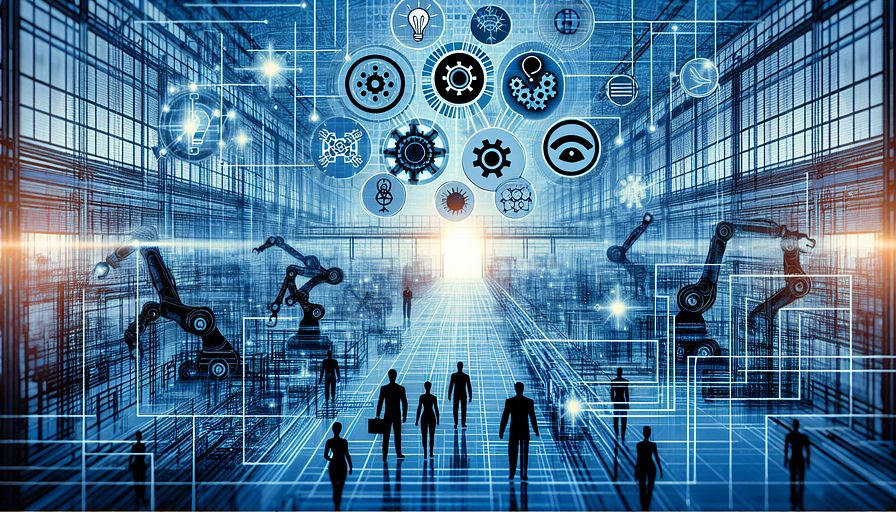Abstract:
Computer vision and industrial automation are transforming manufacturing, with the integration of computer vision optimizing workflows and enabling autonomous solutions. Vision guided robotics exemplifies this synergy, enhancing productivity, reducing costs, and improving workplace safety. Artificial intelligence (AI) further enhances these systems, optimizing performance, predicting maintenance needs, and enabling predictive analytics. Key roles in implementing AI-driven manufacturing include Directors of Technologies and Directors of Engineering, crucial for selecting appropriate technologies and managing change. Embracing AI, computer vision, and industrial automation is crucial for future-proofing manufacturing organizations, empowering growth, and ensuring long-term success.
Computer Vision, Industrial Automation, and AI in Manufacturing: A Chief Technology Officer's PerspectiveComputer Vision and Industrial Automation: A Powerful Duo Revolutionizing Manufacturing
As a Chief Technology Officer (CTO), I've seen firsthand the transformative potential of computer vision and industrial automation in manufacturing. Combining these technologies enables more precise, efficient, and safe production processes. Computer vision excels at processing visual information, identifying patterns, and making decisions based on that data. Integrating computer vision into industrial automation systems not only optimizes existing workflows but also paves the way for innovative, autonomous manufacturing solutions.
Vision Guided Robotics: A Prime Example of Computer Vision and Industrial Automation Synergy
A perfect example of this synergy is vision guided robotics. By equipping robots with computer vision capabilities, they can accurately detect, locate, and manipulate objects in their environment. This technology has numerous real-world applications, from assembling complex products to managing inventory in warehouses. Moreover, it reduces human intervention, leading to improved productivity, reduced labor costs, and increased workplace safety.
AI in Manufacturing: Elevating Computer Vision and Industrial Automation
Artificial intelligence (AI) further enhances computer vision and industrial automation, introducing self-learning and adaptive abilities to these systems. AI-driven algorithms can optimize machine performance, predict maintenance needs, and adapt to changing production environments. By processing vast amounts of data, AI enables predictive analytics, ensuring that manufacturing processes operate at peak efficiency and minimizing downtime.
Director of Technologies and Directors of Engineering: Crucial Roles in AI-Driven Manufacturing
In my experience, Directors of Technologies and Directors of Engineering play vital roles in implementing AI-driven computer vision and industrial automation solutions. Their expertise is crucial in selecting appropriate technologies, integrating them into existing infrastructure, and managing change as organizations adopt these advanced systems. A strong partnership between the CTO, Directors of Technologies, and Directors of Engineering is essential to ensure successful implementation and ongoing optimization of AI-driven manufacturing technologies.
Empowering the Future: Chief Technology Officers and AI-Driven Manufacturing
As a CTO, I firmly believe that embracing AI, computer vision, and industrial automation is essential for future-proofing manufacturing organizations. These technologies offer unparalleled opportunities to streamline operations, reduce costs, enhance safety, and improve overall productivity. By fostering a culture of innovation and collaboration, CTOs can lead their organizations into a new era of AI-driven manufacturing, empowering growth, and ensuring long-term success.














